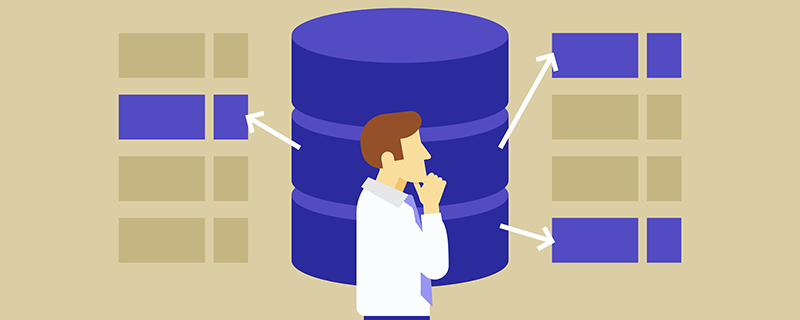Aggregation functions include: 1. AVG, returns the average value; 2. COUNT, returns the number of items in the specified group; 3. MAX, returns the maximum value of the specified data; 4. MIN, returns the minimum value of the specified data Value; 5. SUM, returns the sum of specified data; 6. VAR, returns the statistical variance of all values in a given expression; 7. VARP, etc.

The operating environment of this tutorial: windows7 system, SQL Server 2019 version, Dell G3 computer
sql server Aggregation functions are:
1, AVG
Returns the average value in the specified group, and null values are ignored.
For example:
select prd_no,avg(qty) from sales group by prd_no
2, COUNT
Returns the number of items in the specified group.
For example:
select count(prd_no) from sales
3, MAX
## Returns the maximum value of the specified data.
For example:select prd_no,max(qty) from sales group by prd_no
4, MIN
## Returns the minimum value of the specified data.For example:
select prd_no,min(qty) from sales group by prd_no5, SUM
Returns the sum of the specified data, can only be used for numeric columns, empty Value is ignored.
For example:
select prd_no,sum(qty) from sales group by prd_no6, COUNT_BIG
Returns the number of items in the specified group, which is different from the COUNT function. COUNT_BIG returns a bigint value, while COUNT returns an int value.
For example:
select count_big(prd_no) from sales7, GROUPING
Generates an additional column when added with the CUBE or ROLLUP operator When the row is added, the output value is 1. When the added row is not generated by CUBE or ROLLUP, the output value is 0
For example:
select prd_no,sum(qty),grouping(prd_no) from sales group by prd_no with rollup8, BINARY_CHECKSUM
Returns a binary check value calculated on a row in a table or a list of expressions, used to detect changes to rows in the table.
For example:
select prd_no,binary_checksum(qty) from sales group by prd_no9, CHECKSUM_AGG
Returns the check value of the specified data, and empty values are ignored.
For example:
select prd_no,checksum_agg(binary_checksum(*)) from sales group by prd_n10, CHECKSUM
Returns the check value calculated on the row of the table or on the expression list , used to generate hash indexes.
11. STDEVReturns the statistical standard deviation of all values in the given expression.
select stdev(prd_no) from sales
Returns the standard deviation of the fill statistics for all values in the given expression.
For example:
select stdevp(prd_no) from sales
Returns the statistical variance of all values in the given expression.
For example:
select var(prd_no) from sales14, VARP
Returns the filled statistical variance of all values in the given expression.
For example:
select varp(prd_no) from sales
The above is the detailed content of What are the aggregate functions in SQL Server?. For more information, please follow other related articles on the PHP Chinese website!